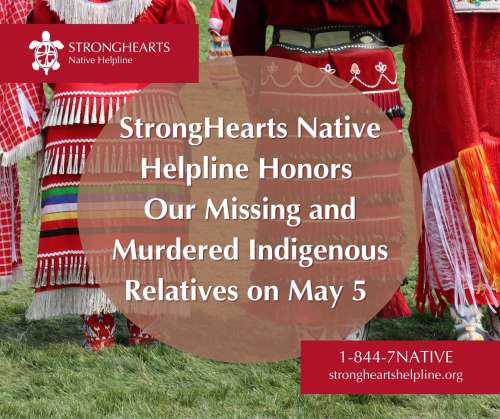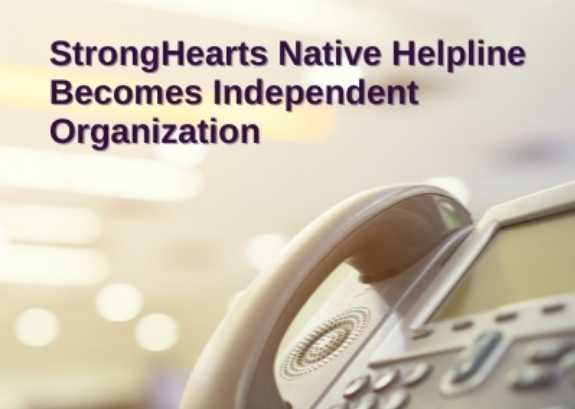 April is sexual assault awareness month, when the justice system, law enforcement, helpers and advocates lift the voices of victim-survivors and create a safe space for them to share their stories. It’s about a loss of innocence as happens so often with children and young adults; and it’s about stories of survival and the unrelenting strength and resilience of survivors.
April is sexual assault awareness month, when the justice system, law enforcement, helpers and advocates lift the voices of victim-survivors and create a safe space for them to share their stories. It’s about a loss of innocence as happens so often with children and young adults; and it’s about stories of survival and the unrelenting strength and resilience of survivors.
“No other ethnicity faces the same high rates of sexual violence as do our relatives in Indian Country,” said Lori Jump, CEO, StrongHearts Native Helpline.
Violence Against Native Women and Men
According to the National Institute of Justice, Native women experience some of the highest rates of violence across the nation and the highest rates of sexual violence in America. The vast majority (97 percent) of perpetrators are non-Native.
Widely-known statistics include:
-
More than 4 in 5 Native women (84.3 percent) have experienced violence in their lifetime.
-
More than half have experienced sexual violence (56.1 percent) by an intimate partner.
-
Native women face homicide as a leading cause of death. In some counties, Native women are murdered at 10 times the national average.
Rape Culture and Man Camps
Rape culture exists where prevailing social attitudes have desensitized and normalized sexual assault and abuse. Types of sexual assault include: rape, sexual coercion, reproductive coercion, sexual exploitation, unwanted sexual contact, sexual harassment, child sexual abuse, incest, exposure or masturbating in public and voyeurism.
Making matters worse, the extractive industry has a history of setting up “man camps” near Native American reservations where complex jurisdictional issues create a massive legal loophole where non-Natives perpetrators escape prosecution.
“In most cases, Tribal courts do not have jurisdiction over non-Natives who commit crimes against Native people,” Jump explained. “This is where the criminal justice system largely fails to protect Native women and girls and jurisdictional gaps allow perpetrators to commit crimes on tribal land with impunity.”
When Justice Is Denied
Lisa’s story is about a single mother who moved back to her reservation with two baby girls. She was just 25 years old when she met a dangerous man who befriended one of her relatives. Late one evening, he showed up on her doorstep claiming to be injured. She agreed to call someone to help him and left him standing on her porch. When she returned to tell him no one had answered, he had twisted her porch light off, covered his face and burst through the door.
Lisa’s injuries were substantial and required two weeks of recovery in hospital. She nearly lost sight in one of her eyes and left a gaping wound on her face where he had bitten her. Justice was denied when federal prosecutors refused to prosecute him because, “the perpetrator did not use a weapon.”
“If not for complex court jurisdiction issues between Tribal, state and federal governments and a severe lack of resources, Native people might have a clearer path toward justice,” said Jump. “Instead, our relatives continue to be traumatized by domestic and sexual violence – an ongoing source of trauma.
High rates of sexual violence, coupled with a severe lack of resources and opportunities for healing make the services offered through StrongHearts Native Helpline even more critical. Our relatives deserve healing and StrongHearts is committed to help our relatives find it.
StrongHearts Native Helpline serves all individuals who reach out for their services regardless of race, ethnicity, gender, gender identity, age, religion, national origin, sexual orientation, disability, or any other factor protected by local, state, or federal law. Call or text 1-844-762-8483 or chat online at strongheartshelpline.org.
Source
André B. Rosay, “Violence Against American Indian and Alaska Native Women and Men,” June 1, 2016, nij.ojp.gov:
StrongHearts Native Helpline, “The High Risk of Human Trafficking,” January 16, 2021, https://strongheartshelpline.org/stories/high-risk-of-human-trafficking
StrongHearts Native Helpline, “MMIW: Red Symbolizes A Call For Attention.” https://strongheartshelpline.org/abuse/mmiw-red-symbolizes-a-call-for-attention
[content id=”79272″]








